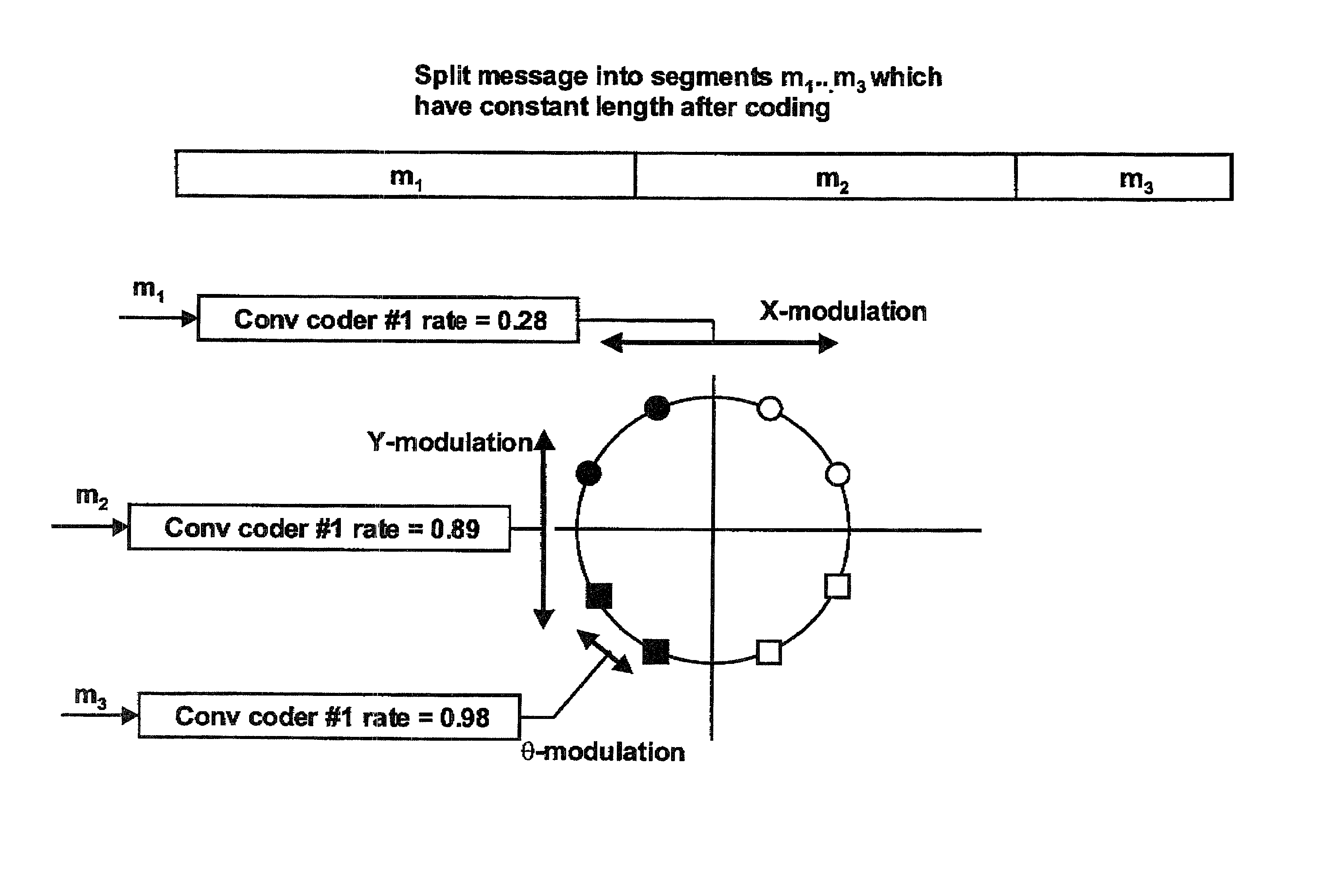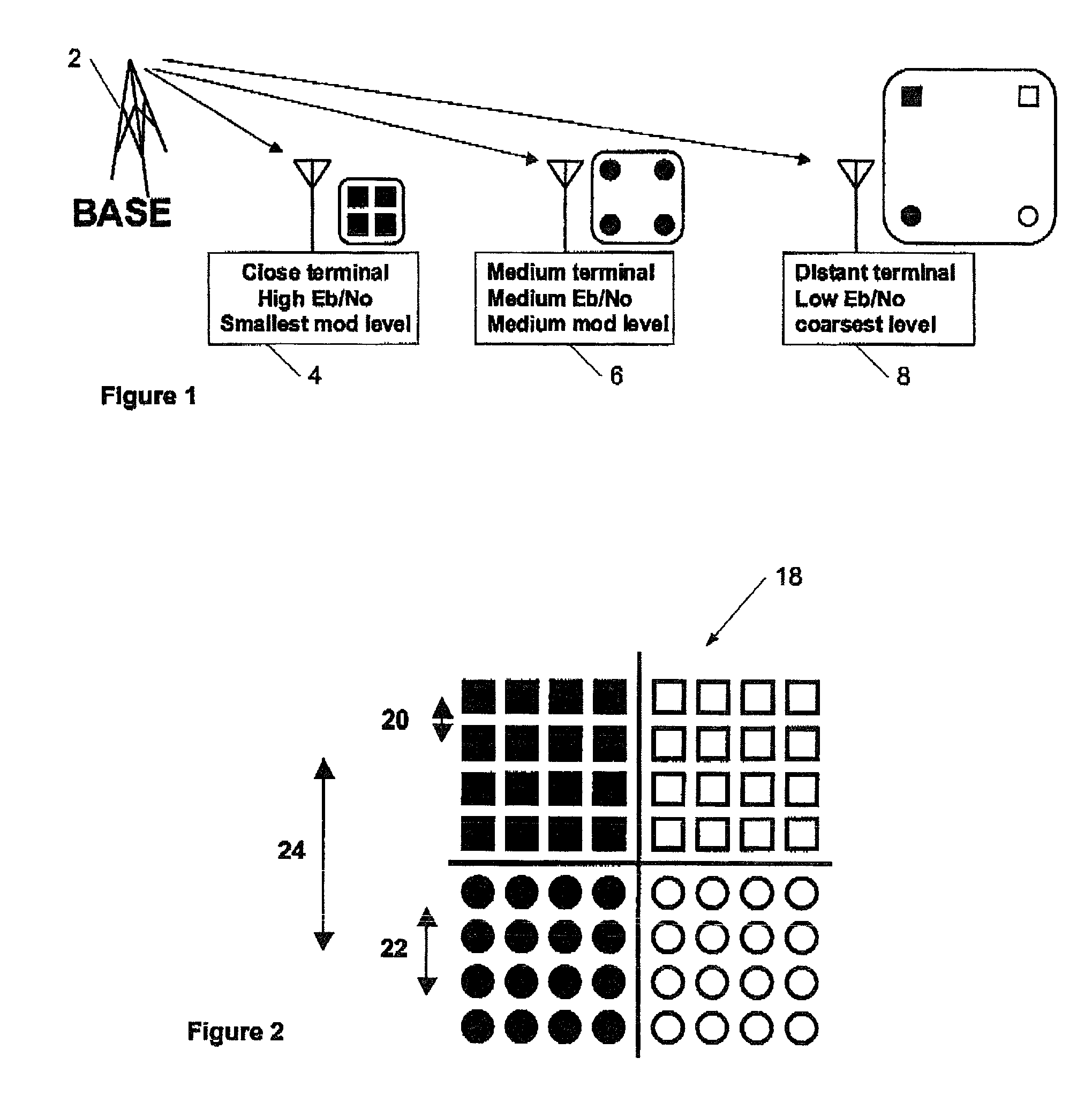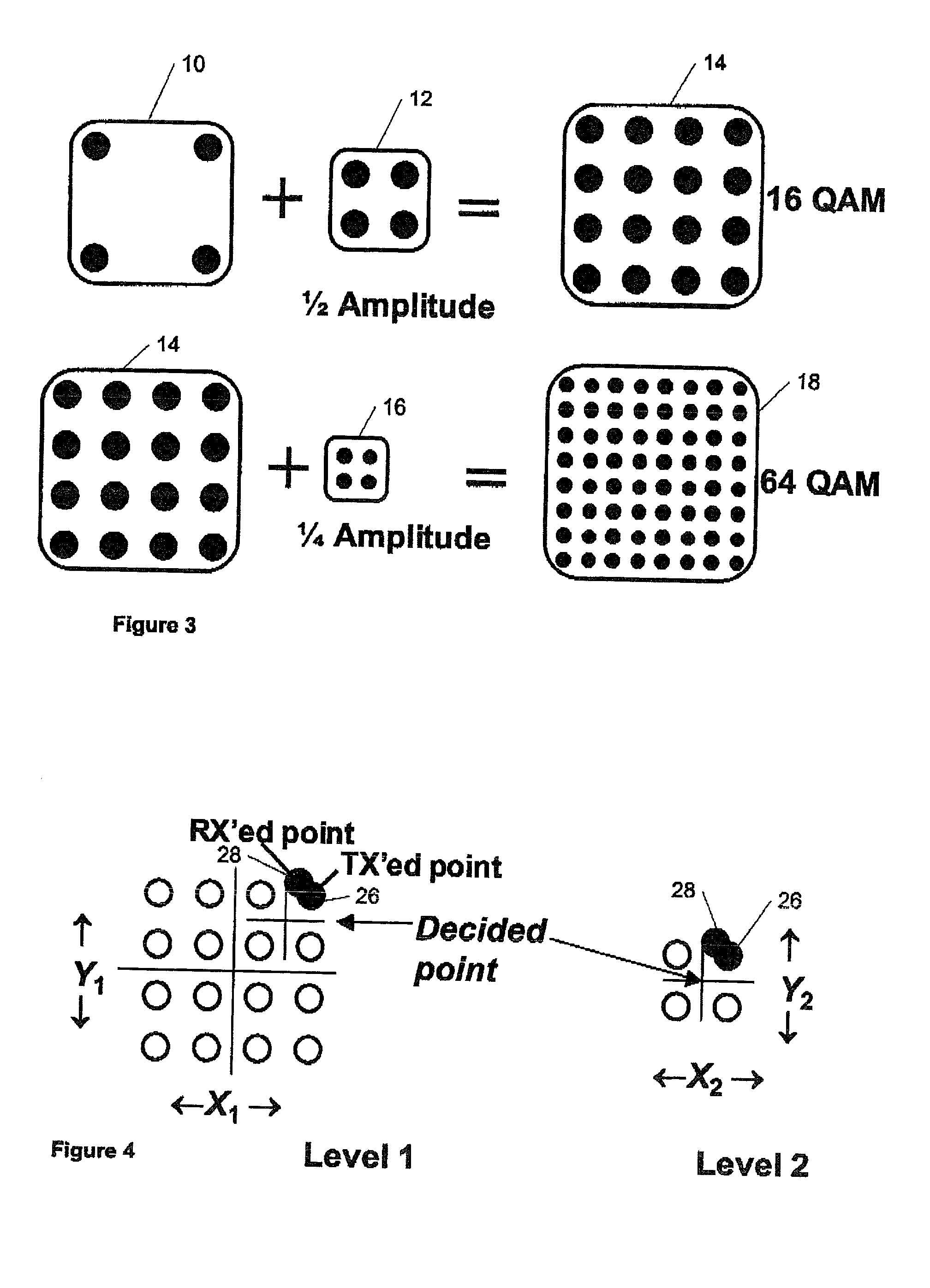Methods and apparatus for transmitting and receiving data over a communications network in the presence of noise
a communication network and data transmission technology, applied in the direction of digital transmission, phase-modulated carrier system, channel coding adaptation, etc., can solve the problems of degrading the performance of other terminals, affecting the network throughput of any terminal, etc., and achieves better carrier noise ratio and higher data rate
- Summary
- Abstract
- Description
- Claims
- Application Information
AI Technical Summary
Benefits of technology
Problems solved by technology
Method used
Image
Examples
Embodiment Construction
[0030] With reference to FIG. 1, a base station 2 (for example a 3G base station sending data packets) is arranged to transmit data to a plurality of terminals 4, 6 and 8 which are located at respectively increasing distances from the base station 2.
[0031] As a result of the differing distances between the respective terminals 4, 6 and 8 and the base station 2, the terminals experience different carrier to noise (Eb / No) ratios. Thus the closest terminal 4 (having the highest Eb / No) is able to demodulate signals which have been transmitted at lower amplitude by the base station 2 than the more distant terminals 6 or 8.
[0032] Thus as will be described in more detail below, the base station is arranged to transmit a signal which is modulated at several different amplitude levels. The highest amplitude modulation may for example, be the only modulation which the distant terminal 8 is able to demodulate, whereas the close terminal 4 is likely to be able to demodulate all modulation level...
PUM
 Login to View More
Login to View More Abstract
Description
Claims
Application Information
 Login to View More
Login to View More - R&D
- Intellectual Property
- Life Sciences
- Materials
- Tech Scout
- Unparalleled Data Quality
- Higher Quality Content
- 60% Fewer Hallucinations
Browse by: Latest US Patents, China's latest patents, Technical Efficacy Thesaurus, Application Domain, Technology Topic, Popular Technical Reports.
© 2025 PatSnap. All rights reserved.Legal|Privacy policy|Modern Slavery Act Transparency Statement|Sitemap|About US| Contact US: help@patsnap.com



